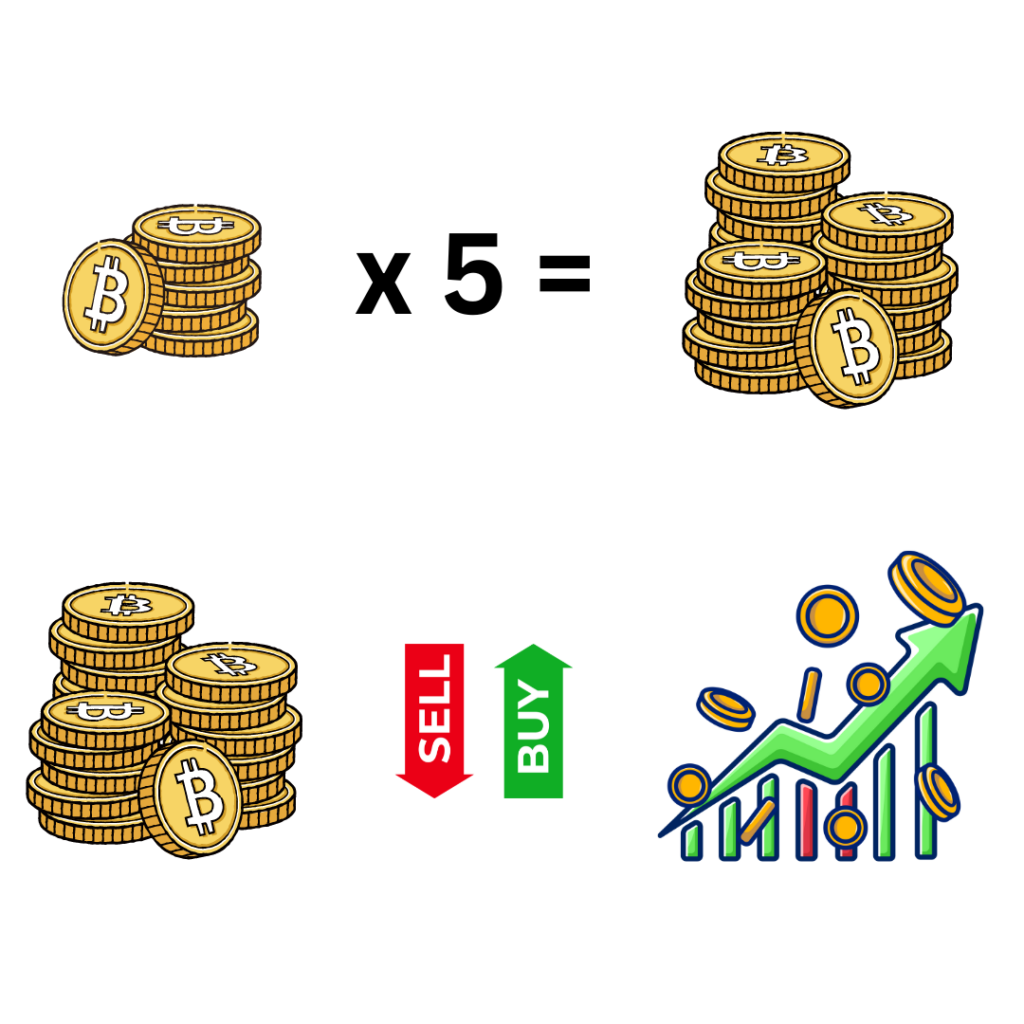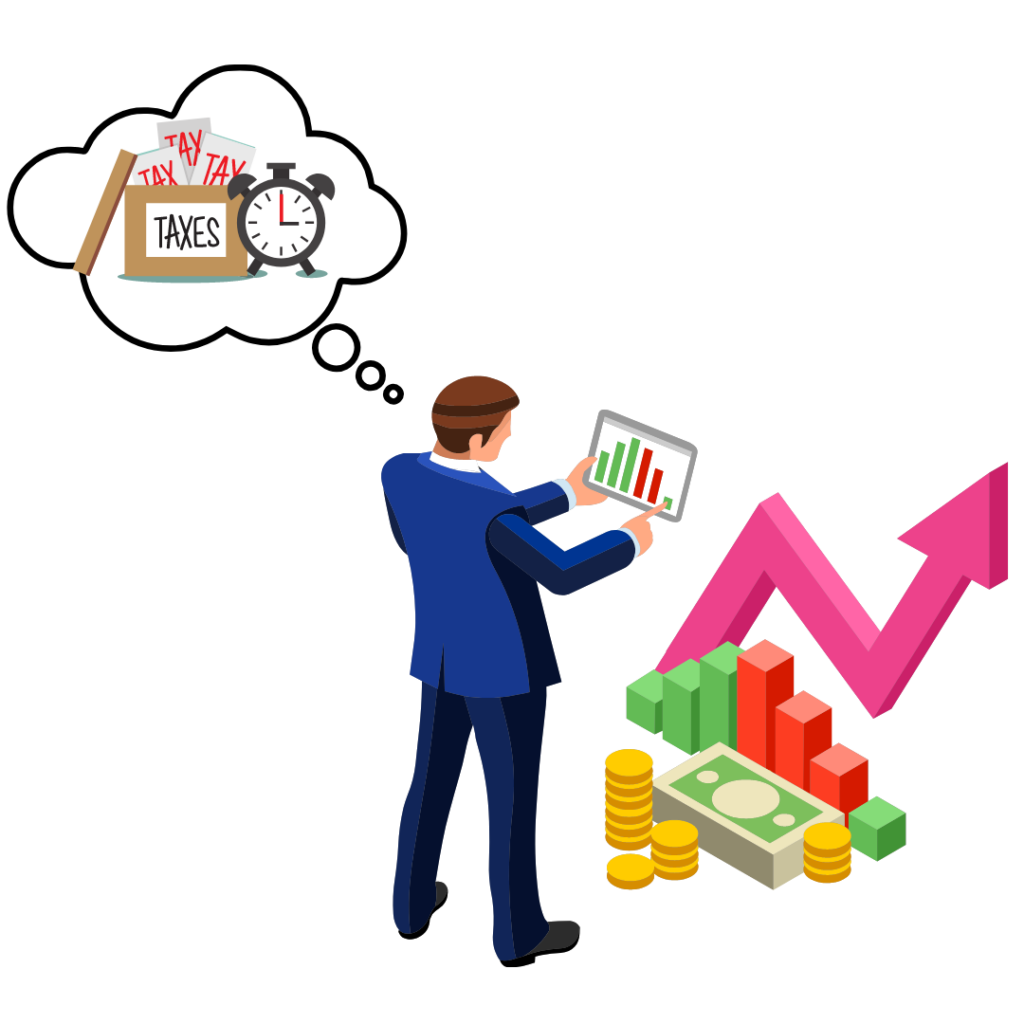Margin Trading Cryptocurrency
Sometimes, despite good market indicators and trading skills, traders are limited by how much capital they have to invest. Margin trading solves this problem. Margin trading cryptocurrency allows you to long or short bitcoin for more than the capital you have.
Think of it as a loan provided only for trading, where the collateral is your existing capital. The more leverage you have, the higher the potential reward is. But also the higher the risk is.
If you’re new to crypto trading and day trading, you might be unsure if margin trading cryptocurrency is a good trading strategy for a beginner. But to answer this question, first, we must understand how it works and weigh the risks and benefits.
What is Margin Trading Cryptocurrency?

As we mentioned, margin trading crypto allows traders to open positions for more than the capital they have. In other words, margin trading gives traders leverage.
Let’s look at an example:
Suppose you only have 1000 USDT. But you want to open a position for 3000 USDT in a BTC/USDT pair. With margin trading, you can borrow the rest of 2000 USDT from any exchange that allows it and open a position to long or short Bitcoin.
So, whatever reward you would have earned with 1000 USDT, you can now earn up to 3x that. Why? Because you have the 3x leverage.
Needless to say, it also exposes you to an equally substantial amount of risk.
How Does it Work?
In most exchanges, the process to margin trade cryptocurrency is pretty straightforward –
- You open a margin account and transfer a minimum amount of funds to it (varies based on different exchanges)
- You then open a position for your desired amount.
- The exchange will automatically lend you the remaining amount you don’t have and open a long or short position for you.
- And when you close the trade, the exchange will automatically deduct what you owe them, along with interest fees, and transfer the remaining amount to your account, assuming you made a profit.
Most exchanges provide up to 2x, 5x, 10x, and some even 50x leverage to margin trade crypto.
But you won’t make a profit on every trade, right? So, what happens when you make a loss? Does the exchange lose their funds as well? Do you have to pay them back?
When you suffer a loss, you might lose all your funds, but the exchange loses none.
If you remember, we mentioned that margin trading is like a crypto loan where the collateral is your existing capital. Whenever you start incurring a loss in a trade, the exchanges automatically close your position at a certain threshold. This threshold is called the liquidation price.
In other words, it’s when you lose 100% of your original funds.
Let’s use the same example we used before.
Your original funds are only 1000 USDT. But you opened a position for 3000 USDT. Depending on whether you long or short, as long as the trade goes in your favor, you’re fine. But as soon as things go south and you lose your original 1000 USDT, the exchange will automatically close the position, leaving you with a total loss.
Another way to calculate the liquidation price is by dividing 100 by the amount of leverage you’re using. So, if you open a position with 5x leverage, the exchange will automatically force the trade to close on a 20% (100/5) price shift.
Even though you get to trade with more leverage to earn more rewards, you’re also exposed to the risk of losing all your funds.
Benefits of Margin Trading Cryptocurrency
Before we answer whether margin trading cryptocurrency is good for beginners, let’s weigh the pros and cons, starting with the pros.
Larger Trades with Less Capital
For people with less capital to start trading with, margin trading seems like a viable strategy. Plus, it exposes you to bigger profits (and losses) in a shorter period of time.
Otherwise, you would have to start with a small capital and work your way up to the larger figures. But margin trading allows you to begin at any level with your existing capital.
Greater Rewards
This goes hand in hand with the last point. Since you get more leverage to open bigger trades, you can also potentially earn more than your existing capital may allow you to.
Protects your Funds from Hacks
Many traders don’t prefer to keep their funds in a custodial wallet (crypto exchanges) since they are more prone to hacks and compromises, which is pretty common in the crypto industry.
Most recently, Binance suffered a $570 million hack.
Margin trading cryptocurrency allows you to open bigger trading positions without transferring all your original funds to an exchange.
Risks & Drawbacks of Margin Trading Cryptocurrency
Now that we know the benefits of margin trading cryptocurrency. Let’s find out its risks and drawbacks.
Greater Losses
We already extensively discussed this. Margin trading may allow you to open a position with more leverage, but it has an elevated risk of losing all your funds if you hit the liquidation price.
Requires Impeccable Timing
Timing is everything in short-term trading strategies, especially margin trading, where the stakes are much higher.
Sometimes, due to higher leverage and the highly volatile nature of cryptocurrency, trades get liquidized before traders even get time to react. That’s why you need impeccable timing to pull off margin trading cryptocurrency, especially in high-leverage trades.
Fees & Other Costs
Did you really think the exchanges are going to lend you crypto for free?
Most of these exchanges charge an interest fee, which varies based on different exchanges and trading pairs, but can be as low as 0.16%.
Sometimes, these extra fees and costs eat up your profits. So, make sure you account for these beforehand.
Best Crypto Exchanges for Margin Trading
Apart from a trusted and credible platform, when choosing the best exchange for margin trading cryptocurrency, you need to factor in – interest fees, how much leverage they provide and other useful features and tools.
- ByBit
- Binance
- Bitmex
- Phemex
- Kraken
Check out our list of the 8 best crypto margin trading exchanges.
Best Practices for Margin Trading Cryptocurrency
While learning any new skill or profession, there are some lessons you learn the hard way. But you don’t have to. The following are best practices for margin trading cryptocurrency that will cut short your learning curve and help you avoid some of the most common mistakes.
Stop-Loss
What is stop loss? It’s a tool used to manage and minimize risks. A stop-loss order will automatically close a trade at a position set by you. It allows traders to prevent greater losses in short-term trading strategies.
This may sound similar to liquidation, but it’s not. With stop-loss, you can close the trade before you reach the liquidation amount.
Practically speaking, most traders use stop-loss to be more efficient, as it’s very difficult and time-consuming to manually keep track and manage all the trades at once (most traders have multiple positions open at a time).
Stick with Bitcoin if you’re Beginner
As a beginner in margin trade, you should stick with Bitcoin since it’s the least volatile of all cryptocurrencies (though still way more volatile than stocks and securities).
Once you’re more experienced and have more capital that you’re okay with losing, you can adopt a high-risk-high-reward strategy by trading smaller cryptocurrencies with more volatility.
Basic Trading Best Practices
Other than the above two points, the following are some general trading basics you should always keep in mind, whether it’s margin trading or any other trading strategy.
- Always invest small amounts when short-term trading
- Never go all in on one trade.
- Don’t be greedy. Know when to close a position.
- Learn technical analysis.
- Know about fees and liquidations in advance.
Taxes on Crypto Margin Trading

Borrowing a loan is not taxable in most countries, including the US and Canada. However, if you make a profit using the borrowed amount, you’ll be liable to capital gain tax rates on your gains.
So, taking the same example we used at the start, suppose you buy 2 BTC using the 3000 USDT (2000 USDT of which is borrowed) and sell them for 4000 USDT.
In this case, the cost basis would be $3000 (1 USDT = $1), and the capital gain would be $1000.
Naturally, if you incur a loss, you can offset it with your gains.
Also, if your funds are liquidized, it will be seen as a disposal event, making you liable for capital gains.
But since most traders convert fiat currency into stablecoins, that shouldn’t be a problem. However, you still have to report the disposal on your tax return, whether you incur a profit or not.
You can check out the guide on crypto loan taxes for more nuances and details since the leverage in margin trading is quite similar to crypto loans.
Other than that, check out our Crypto Tax Guides section to learn how crypto taxes work in your country.
Is Crypto Margin Trading Good for Beginners?
If you’re a complete beginner in crypto trading as a whole, you should probably steer clear of margin trading crypto until you have some experience in how crypto trading is done.
Once you get past that point and become fairly confident in your trading skills, you can dip your feet into margin trading.
Margin trading cryptocurrency is a great advanced trading strategy as it allows you to diversify the currencies you’re trading and spread out the risks.